Apple Inc. is looking to patent a software technique that would give iPod listeners access to critical external audio sounds — such as airline announcements — without having to remove their earbuds or pause their music. Separately, the company has also filed for continuation patent on a wide notebook touchpad that incorporates advanced touch control features.
The first filing, titled "presentation of audible media in accommodation with external sound," notes that external sounds — such as traffic and street noise — is typically reduced or blocked when a user is listening to audio content on their iPod or iPhone.
However, Apple claims that such external sound can be presented to users via the same interface, channel, or audio-output device used to present music or video sound tracks through a blending technique.
"This allows the user to use the headphones to listen, for example, to an announcement being made by the pilot, converse with flight attendants or other passengers without having to take the headphones off," the company wrote in the filing. "In addition, the media player can automatically resume the presentation of the media upon request (e.g., by pressing the pause again). It will be appreciated that external sound and digitally stored audible media (e.g., music files) can be combined (or blended) and presented to the user via the headphones in accordance with user input or various other programmable criteria."
Apple added that the media player can also store external sound as digital data and present it to the user with various play-back functions (e.g., pause, forward, backward, skip) that digital media players normally provide in connection with presentation of digital media. As such, users can configure the media player to effectively store the external sound while media is being presented to them. The user can later listen to the stored external sound when it is convenient. In addition, the use can conveniently go over the stored external sound with play-back functionality similar to that provided by digital media players.
The February 7, 2006 filing is credited to Apple employees Michael Lee and John Arthur.
Wide touchpad on a portable computer
In its second filing, which is presented as a continuation of an earlier patent on the same subject, Apple describes a notebook computer where the touchpad extends substantially into the palm rests areas of the base assembly.
"The wide touchpad may be a cursor control device having the capabilities of conventional computer mouse devices, such as the ability to point, drag, tap, and double tap objects on a graphical user interface, as well as more general purposes such as scrolling, panning, zooming, and rotating images on display screen," the filing states. "The wide touchpad extends into the areas on the surface of the base assembly that are normally reserved for palm rest areas (e.g., flat areas on the surface of the base assembly that support a user's palms and/or wrists while typing)."
Apple also says "the wide touchpad can filter multiple contact patches in order to accept a particular contact patch in one area of the touchpad while rejecting a second contact patch elsewhere on the wide touchpad. In one embodiment, a sensor is disposed between the keyboard and touchpad. The sensor defines a planar sensing region extending upwards from the top surface of the base assembly. The sensor detects a user's hand that may be resting on the base assembly with a palm portion making contact with a portion of the wide touchpad and the fingers extending toward keyboard."
When this detection is made, any contact made with a corresponding portion of the touchpad is rejected, having been interpreted as unintentional contact by the user, according to the filing. Alternatively, detection of fingers extending toward the keyboard may be evaluated as one of many factors used to decide whether and what significance to accord to contact with the touchpad.
"For example, other factors may include the profile of the contact with the touchpad, the level of keyboard activity at the time of contact, etc," Apple wrote. "In this way, the touchpad may effectively serve as a palm rest (e.g., the user may intentionally rest one or more palm or other part of a hand or arm on a portion of the touchpad, which is recognized as an unintentional input) in addition to a functional touchpad when an input is interpreted as being an intentional contact by the user."
The March 30, 2007 filing is credited to Apple interface designers Steve Hotelling, Chris Ligtenberg, Duncan Kerr, Bartley Andre, Joshua Strickon, Brian Huppi, Imran Chaudhri, Greg Christie, and Bas Ording.
 Prince McLean
Prince McLean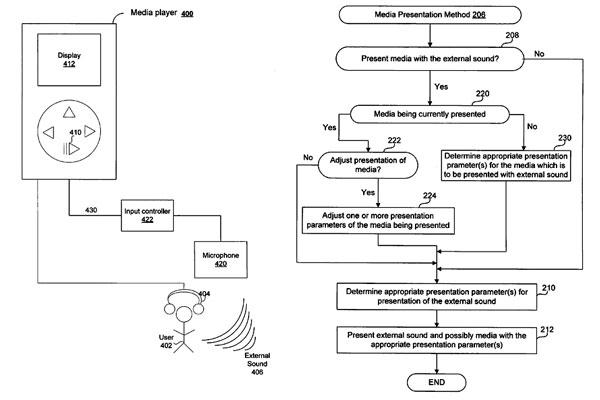
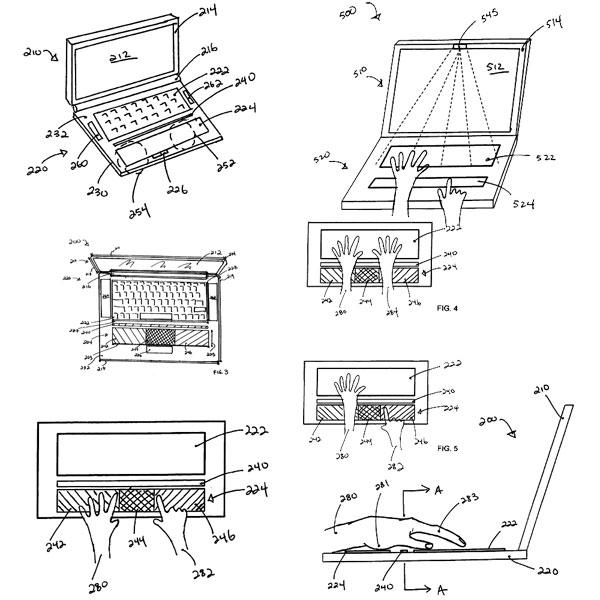

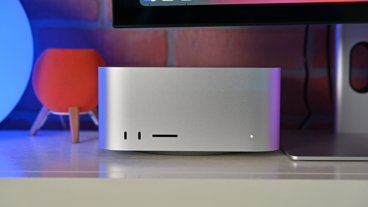





-m.jpg)






 William Gallagher
William Gallagher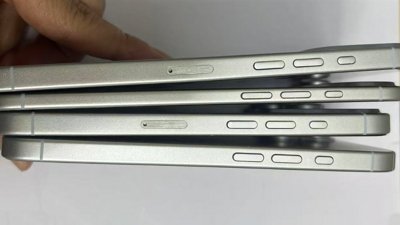

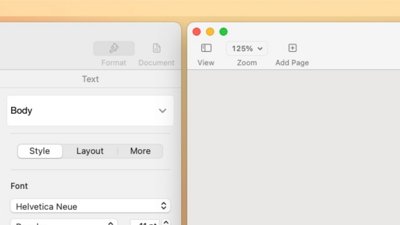
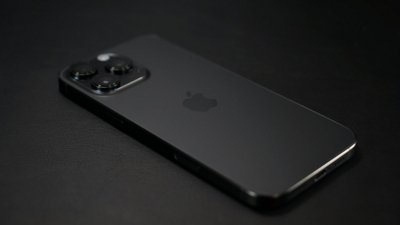
 Wesley Hilliard
Wesley Hilliard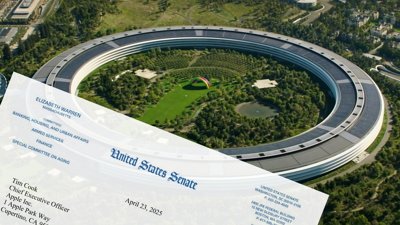
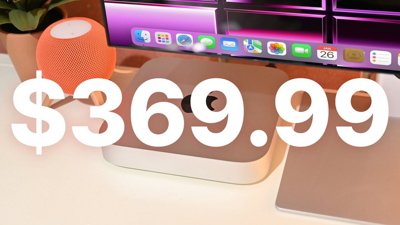
 Christine McKee
Christine McKee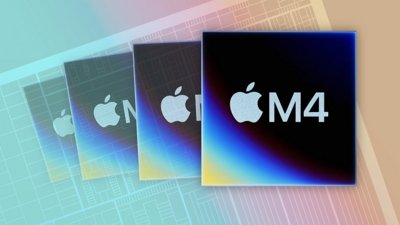
 Malcolm Owen
Malcolm Owen




-m.jpg)




13 Comments
So headphone zombies will now be able to truly treat the real world as one big TIVO event.
What we say to Johnnie... "Clean up your room now!"
What Johnnie hears... "Clean up y.. [pause]"
So headphone zombies will now be able to truly treat the real world as one big TIVO event.
What we say to Johnnie... "Clean up your room now!"
What Johnnie hears... "Clean up y.. [pause]"
There is always somthing funny about the patent requests that Apple puts out. Apple - being the secret mongers they are (how we love them for it) - put out patenets for technologies that they never intend to implement.
Take their phone (have you heard of it?!); multi-touch was somthing that they would patenet for sure. Did we see anything go to the patenet office with the title 'implementation for multi-capacitor display for a handheld moble device' ? NO! I think the closest thing we saw was an implementation for an iPod to have a screen overlay that could accept multiple inputs. It looked like a soundboard that should be used with logic. The big difference is that instead of a mechanical slider or keyboard utilizing multi-touch, it was the finger that was intendid to give input. It was very coy indeed.
Apple could be doing anything with this. I saw nobody make any allusions to a phone interface from the mechanical overlay, and I doubt that anyone will come to any (correct) conclusions about this. Just know that whatever they're doing, it'l be cool when it's done!
Now this is interesting. Right before the Mac presentation of last August 7, I've been thinking that if Apple would extend MultiTouch into desktop and laptop computing, they would not do it using a touch screen, but something that would lay next to your keyboard. This patent does indeed show a way to do that.
But I also think that the new iMac might give some clues. Doesn't the combination of the new flat aluminum keyboard and the already existing white mouse look a bit awkward? It's just not totally Apple-like. This mouse is going to be replaced soon as well. By something aluminum and flat. With a scratch-resistant glass surface, just like the iMac itself. A MultiTouch pad! It would have the same form factor as the new keyboards, and could be placed neatly next to it, or even before it.
This pad could have a miniature representation of the screen for easy orientation. But it wouldn't be convenient to have to look at both the screen and the pad all the time, so the system would also need to give a visual clue on the real screen, like a mouse pointer, when the pad senses the approach of one or more fingers. Actually touching the pad then would mean a click, and allow for drag, resize, zoom, select etc. Once we got used to this idea, and more and more applications make full use of this, the touch thing could become more and more sophisticated, adding pressure sensitivity for example. Many creative, artistic possibilities here, along the lines of Jeff Han.
Considering all the patents in this area, Apple is clearly aware that touch would allow for a much more intuitive way to communicate with a computer. As an extra, if they have a very desirable and well-patented technology, that would give copycats less chance...
So this is what I think: together with Leopard, Apple will introduce a separate MultiTouch pad that is to replace the mouse, and allows for far more powerful input.
So whenever all the loony's come out with the wish for multi-touch iMac's and notebooks i laugh and laugh and laugh in their faces. It is the most stupid idea in the world and if anyone with half a brain actually thought about it for a minute they would realise that it is a non starter (and i know many sensible people on these forums also think this too) nobody wants to spend all day with their arms in the air touching an iMac screen, it will never work. he notebook screen is no better as it will very quickly become greasy and dirty to the point you would need to clean it every 5 mins. So everyone please stop now, their will never be a multi-touch screen for a computer from Apple. BUT.. This patent application does in fact throw up a potential great application for multi-touch on a notebook. I am sure someone with good photoshop skills can mock one up in minutes but take a MBP, keep the screen as it is but replace the lower section (i.e. the whole keyoard/trackpad area) with one giant multi-touch surface. So your movements on the MT Surface are replicated on the screen. The keyboard would then become just like the iPhones keyboard, only popping up when you need to write something. I actually really like that idea.
I am pretty sure that this is the new MBP to be launched at Macworld next year!